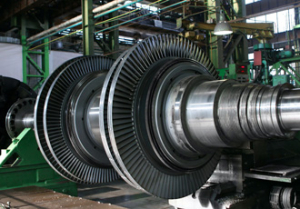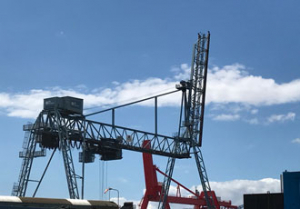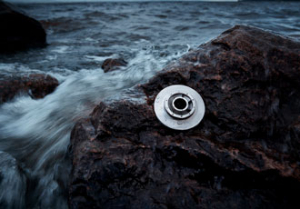Running Rings Round Steering Design Challenges
16th May 2008
Source:
Rencol
Tolerance rings are simple in concept, inexpensive, compact and easy to use yet when integrated in vehicle steering column assemblies, they can greatly enhance performance and safety while reducing overall costs. Chris Needes explains.
Ensuring that the steering column will collapse safely in the event of a collision is one of the key challenges faced by designers of automobile steering assemblies. It is, however, far from being the only challenge.
It is also necessary, for example, to ensure that steering locks cannot easily be defeated by the application of excess force to the steering wheel and that, in modern electrically powered steering (EPS) systems, the steering mechanism is protected against back-driven shocks, such as those generated when a wheel hits the curb.
There are, of course, conventional engineering solutions for all of these issues, but they’re usually costly, complicated or both. As we’ll see, tolerance rings are the key to solutions which are simpler, more cost effective and more elegant. Before looking at these solutions in detail, however, it’s a good idea to investigate exactly what a tolerance ring is, and what it can do.
From the user’s viewpoint, tolerance rings are simple components, although a high degree of expertise is involved in their design and manufacture. Essentially, they comprise of a radially sprung sleeve that’s designed to be used between two mating annular components to give a secure interference fit.
Although tolerance rings are invariably designed to suit a specific application, all types have one essential feature in common – a series of protrusions or ‘waves’ around their circumference. Each wave acts as an individual radial spring which, when the tolerance ring is in place, transfers forces between the mating components.
By varying the size, geometry and number of waves, and selecting an appropriate material from which to fabricate the ring, the manufacturer can determine very precisely the parameters of the interference fit which it provides. Factors that can be controlled include the maximum torque which can be transferred before slipping occurs, and the level of axial retention provided.
Now let’s take a look at how tolerance rings can be used to advantage in steering assemblies, starting with the need to make provision for steering column collapse.
One conventional approach to achieving this is to use energy-absorbing straps that are designed to yield at a pre-determined force when pulled over a set of pins. This arrangement is, however, complicated to fit and involves numerous components. In addition, the performance of an individual assembly can never be totally verified, as testing necessarily destroys the strap.
Another commonly encountered approach is the use of ball sleeves. These are plastic sleeves with ball bearings pressed around their circumference. Compressed between the mating components, the ball bearings slide at a pre-determined force. Unfortunately, ball sleeves are difficult to assemble and the mating components have to be tightly controlled in order to achieve the correct collapse force.
Tolerance rings address all of the shortcomings of these traditional solutions and are, therefore, being used more and more widely. They form the basis of an elegant three-component solution which incorporates a tolerance ring fitted between an outer jacket and an inner tube. The whole assembly is integrated into the steering column.
Should the driver strike the steering column in the course of an accident, the inner tube is driven forward. The tolerance ring provides controlled resistance to this movement, and absorbs energy as the tube moves through the outer jacket. This simple and effective solution provides constant energy absorption characteristics throughout the whole of the collapse cycle.
The benefits over traditional solutions include simpler assembly, reduced component count and lower scrap costs. Further, the tolerance ring solution uses low-cost components, and it is possible to verify the collapse force of any assembly during the assembly process, without damaging that assembly.
Finally, the solution can be very accurately matched to the user’s requirements – by adopting a specific wave shape with a known spring rate it is possible to design a tolerance ring which delivers precise and consistent collapse-force performance.
Another important area of application for tolerance rings in steering assemblies is the protection of column-mounted anti-theft devices (steering locks).
In Europe, EC Commission Directive 95/56/EC dictates that steering locks must be able to withstand a force of 100Nm applied via the steering wheel without failing. While other markets, including the USA, do not have legislation of this type, damage-resistant steering locks are clearly highly desirable in all vehicles.
It is perfectly possible to design a column strong enough to meet the 100Nm requirement, but such components are necessarily heavy, bulky and expensive to produce. Further, if it is damaged during an attempted vehicle theft, even if it doesn’t actually fail, it is likely to render the vehicle undriveable.
The solution is to fit a single or duplex tolerance ring, which is designed to slip at a predetermined torque, between the locking collar and the steering column itself. With this arrangement, if an attempt is made to break the lock by applying force to the steering wheel, the sleeve simply slips. The lock and steering mechanism are undamaged, and the steering remains securely locked to prevent the vehicle from being stolen.
It’s not only in the steering column itself that tolerance rings provide important benefits. A number of leading manufacturers, including Citroen, BMW and Volkswagen, are also using them as key components in the heart of their electric power steering systems.
A typical application is to fix the primary drive gear wheel to the driven shaft with a tolerance ring, thereby eliminating the need for expensive keyways or splines. It is, however, easy to take this application one stage further by arranging for the gear to slip on the shaft at a specific torque level. This allows the tolerance ring to protect the gear teeth from the damage that might otherwise be caused by back-driven shocks.
Not only does this improve the overall reliability of the assembly, it also means that the gears can be fabricated from relatively soft materials, such as nylon plastic, which offer enhanced noise reduction characteristics. Other benefits are that the assembly will continue to operate reliably even after multiple slip cycles.
The demands made of modern steering systems in terms of performance, durability and safety present designers with significant challenges, especially when the constant pressure for reduced costs is also taken into account. Fortunately, as we have seen, tolerance rings sourced from a reputable expert supplier offer a whole range of convenient, straightforward and cost effective solutions.
It is also necessary, for example, to ensure that steering locks cannot easily be defeated by the application of excess force to the steering wheel and that, in modern electrically powered steering (EPS) systems, the steering mechanism is protected against back-driven shocks, such as those generated when a wheel hits the curb.
There are, of course, conventional engineering solutions for all of these issues, but they’re usually costly, complicated or both. As we’ll see, tolerance rings are the key to solutions which are simpler, more cost effective and more elegant. Before looking at these solutions in detail, however, it’s a good idea to investigate exactly what a tolerance ring is, and what it can do.
From the user’s viewpoint, tolerance rings are simple components, although a high degree of expertise is involved in their design and manufacture. Essentially, they comprise of a radially sprung sleeve that’s designed to be used between two mating annular components to give a secure interference fit.
Although tolerance rings are invariably designed to suit a specific application, all types have one essential feature in common – a series of protrusions or ‘waves’ around their circumference. Each wave acts as an individual radial spring which, when the tolerance ring is in place, transfers forces between the mating components.
By varying the size, geometry and number of waves, and selecting an appropriate material from which to fabricate the ring, the manufacturer can determine very precisely the parameters of the interference fit which it provides. Factors that can be controlled include the maximum torque which can be transferred before slipping occurs, and the level of axial retention provided.
Now let’s take a look at how tolerance rings can be used to advantage in steering assemblies, starting with the need to make provision for steering column collapse.
One conventional approach to achieving this is to use energy-absorbing straps that are designed to yield at a pre-determined force when pulled over a set of pins. This arrangement is, however, complicated to fit and involves numerous components. In addition, the performance of an individual assembly can never be totally verified, as testing necessarily destroys the strap.
Another commonly encountered approach is the use of ball sleeves. These are plastic sleeves with ball bearings pressed around their circumference. Compressed between the mating components, the ball bearings slide at a pre-determined force. Unfortunately, ball sleeves are difficult to assemble and the mating components have to be tightly controlled in order to achieve the correct collapse force.
Tolerance rings address all of the shortcomings of these traditional solutions and are, therefore, being used more and more widely. They form the basis of an elegant three-component solution which incorporates a tolerance ring fitted between an outer jacket and an inner tube. The whole assembly is integrated into the steering column.
Should the driver strike the steering column in the course of an accident, the inner tube is driven forward. The tolerance ring provides controlled resistance to this movement, and absorbs energy as the tube moves through the outer jacket. This simple and effective solution provides constant energy absorption characteristics throughout the whole of the collapse cycle.
The benefits over traditional solutions include simpler assembly, reduced component count and lower scrap costs. Further, the tolerance ring solution uses low-cost components, and it is possible to verify the collapse force of any assembly during the assembly process, without damaging that assembly.
Finally, the solution can be very accurately matched to the user’s requirements – by adopting a specific wave shape with a known spring rate it is possible to design a tolerance ring which delivers precise and consistent collapse-force performance.
Another important area of application for tolerance rings in steering assemblies is the protection of column-mounted anti-theft devices (steering locks).
In Europe, EC Commission Directive 95/56/EC dictates that steering locks must be able to withstand a force of 100Nm applied via the steering wheel without failing. While other markets, including the USA, do not have legislation of this type, damage-resistant steering locks are clearly highly desirable in all vehicles.
It is perfectly possible to design a column strong enough to meet the 100Nm requirement, but such components are necessarily heavy, bulky and expensive to produce. Further, if it is damaged during an attempted vehicle theft, even if it doesn’t actually fail, it is likely to render the vehicle undriveable.
The solution is to fit a single or duplex tolerance ring, which is designed to slip at a predetermined torque, between the locking collar and the steering column itself. With this arrangement, if an attempt is made to break the lock by applying force to the steering wheel, the sleeve simply slips. The lock and steering mechanism are undamaged, and the steering remains securely locked to prevent the vehicle from being stolen.
It’s not only in the steering column itself that tolerance rings provide important benefits. A number of leading manufacturers, including Citroen, BMW and Volkswagen, are also using them as key components in the heart of their electric power steering systems.
A typical application is to fix the primary drive gear wheel to the driven shaft with a tolerance ring, thereby eliminating the need for expensive keyways or splines. It is, however, easy to take this application one stage further by arranging for the gear to slip on the shaft at a specific torque level. This allows the tolerance ring to protect the gear teeth from the damage that might otherwise be caused by back-driven shocks.
Not only does this improve the overall reliability of the assembly, it also means that the gears can be fabricated from relatively soft materials, such as nylon plastic, which offer enhanced noise reduction characteristics. Other benefits are that the assembly will continue to operate reliably even after multiple slip cycles.
The demands made of modern steering systems in terms of performance, durability and safety present designers with significant challenges, especially when the constant pressure for reduced costs is also taken into account. Fortunately, as we have seen, tolerance rings sourced from a reputable expert supplier offer a whole range of convenient, straightforward and cost effective solutions.
Similar articles
More from Rencol
- Tolerance rings – from concept to production 18th August 2008
- Tolerance Rings take the strain out of Electric Motors 25th July 2008
- Saint-Gobain Performance Plastics Rencol Trains for Gain 2nd July 2008
- Health and Safety Day a Success! 14th June 2008

-(1)ed.jpg)










Write a comment
No comments